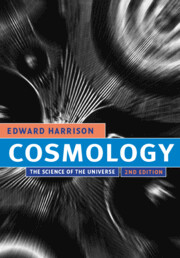Book contents
- Frontmatter
- Contents
- Preface
- Introduction
- PART I
- PART II
- 10 Curved space
- 11 Special relativity
- 12 General relativity
- 13 Black holes
- 14 Expansion of the universe
- 15 Redshifts
- 16 Newtonian cosmology
- 17 The cosmic box
- 18 The many universes
- 19 Observational cosmology
- PART III
- Appendix – Fundamental quantities
- Index
10 - Curved space
from PART II
Published online by Cambridge University Press: 05 June 2012
- Frontmatter
- Contents
- Preface
- Introduction
- PART I
- PART II
- 10 Curved space
- 11 Special relativity
- 12 General relativity
- 13 Black holes
- 14 Expansion of the universe
- 15 Redshifts
- 16 Newtonian cosmology
- 17 The cosmic box
- 18 The many universes
- 19 Observational cosmology
- PART III
- Appendix – Fundamental quantities
- Index
Summary
Man has weav'd out a net, and this net throwne
Upon the Heavens, and now they are his owne.
John Donne (1571–1631), Ignatius His ConclaveEUCLIDEAN GEOMETRY
In the ancient Delta civilizations, geometry was the art of land measurement, and indispensable in the construction of such mammoth works as the Great Pyramid of Giza and Stonehenge. Geometry at first consisted of trial-by-error and rule-of-thumb methods. According to the sacred Rhind Papyrus, the Egyptians of 1800 bc used for π, the ratio of the circumference and the diameter of a circle, the value (16/9)2 =3.1605, as compared with its more exact value 3.1416. The Babylonians of 2000 bc and the Chinese of 300 bc used the rule that the circumference of a circle is three times its diameter, and this value for π is found in Hebraic scripture. The Greeks, in their thorough fashion, developed geometry into a science that climaxed in the axiomatic and definitive treatment presented by Euclid at the Museum in Alexandria in the third century bc.
Axioms
The axiomatic method starts with a set of self-consistent propositions (called postulates or axioms), which are often the simplest and most obvious truths, and examines their logical consequences. Suppose that we wish to persuade someone that statement S is true. We might try to show that this statement follows logically from another statement R that the person already accepts. But if the person is unconvinced of the truth of R, then we must try to show that R follows logically from yet another statement Q.
- Type
- Chapter
- Information
- CosmologyThe Science of the Universe, pp. 189 - 205Publisher: Cambridge University PressPrint publication year: 2000

